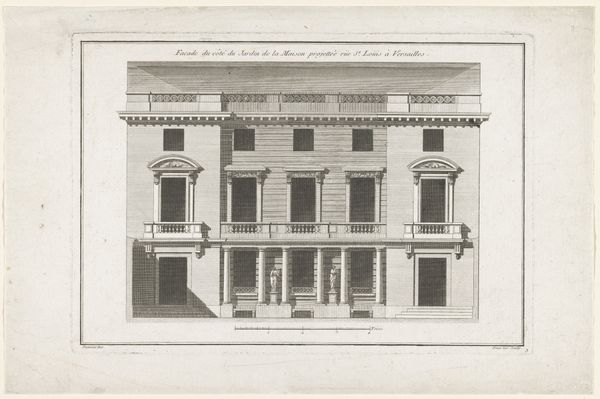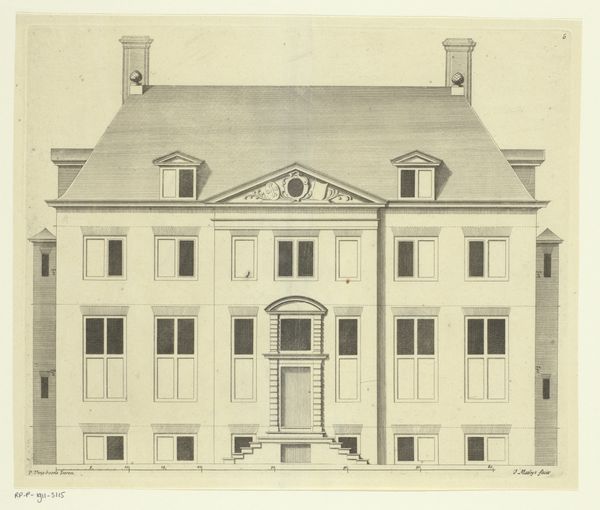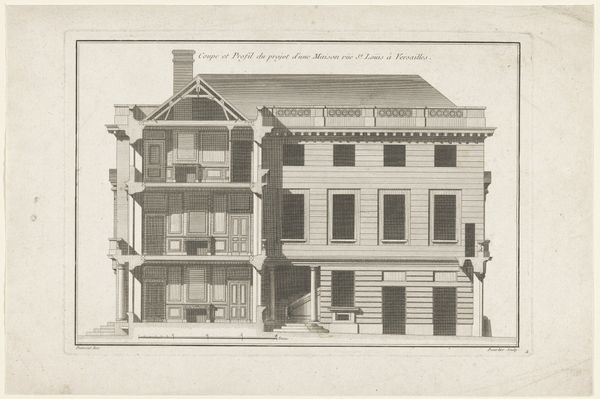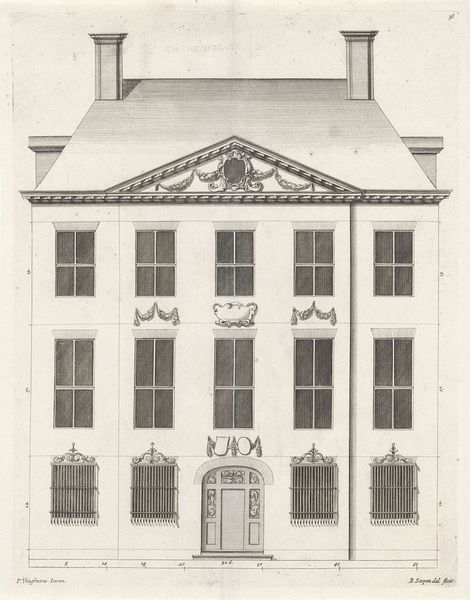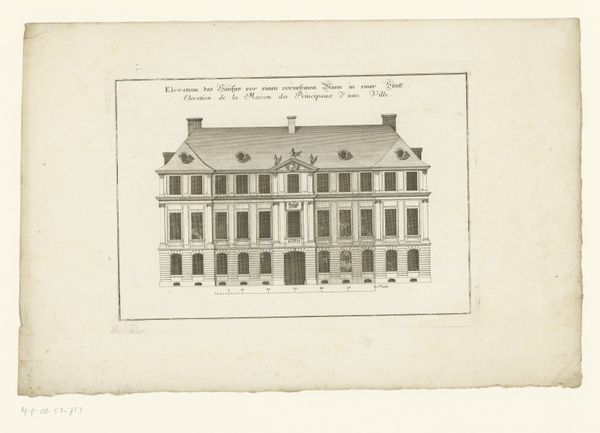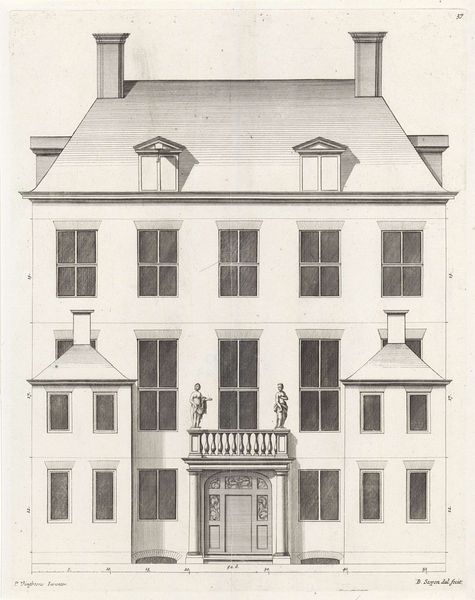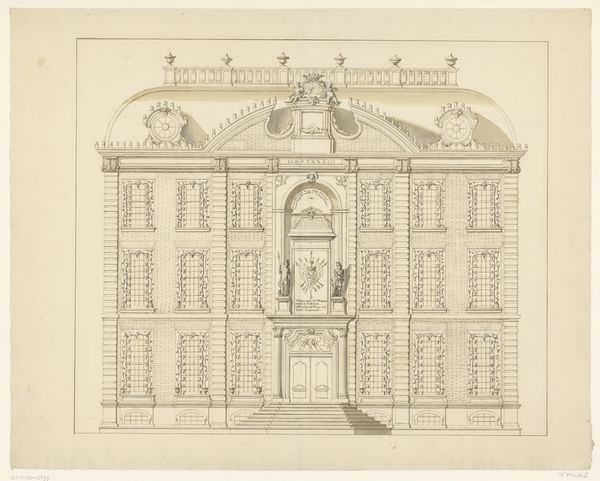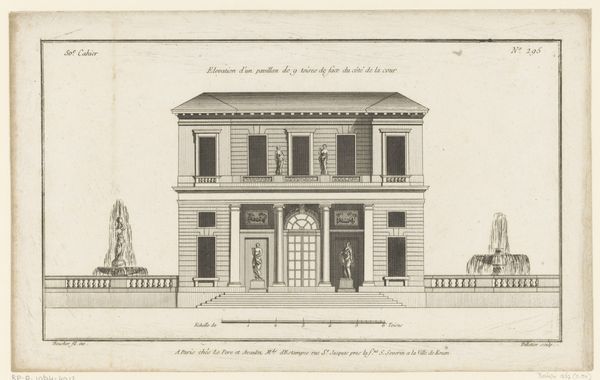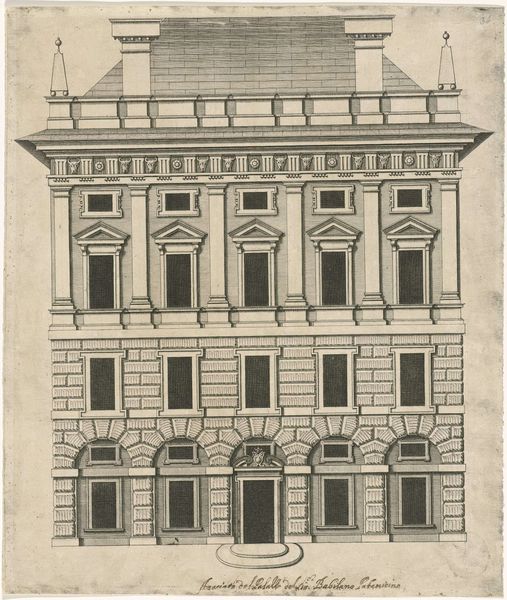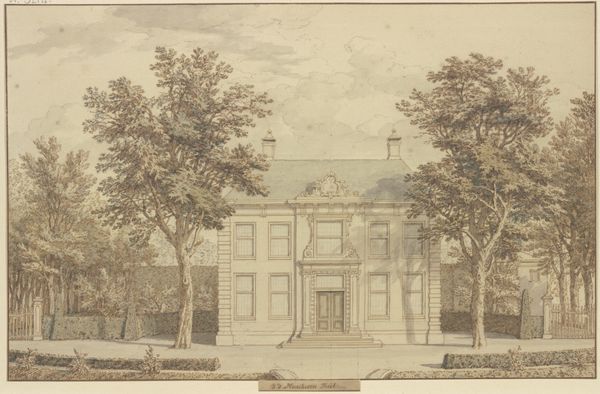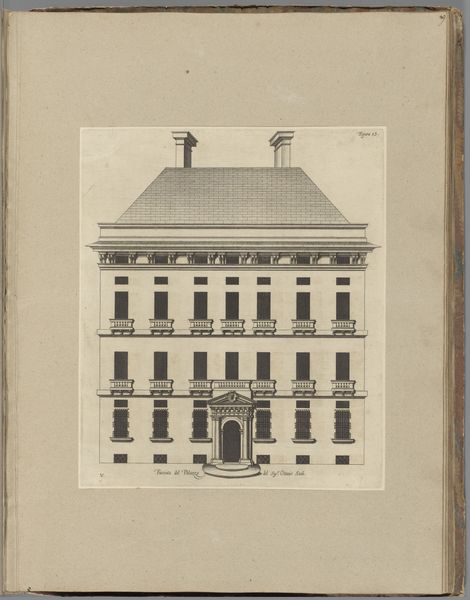
Dimensions: height 330 mm, width 505 mm
Copyright: Rijks Museum: Open Domain
Editor: Here we have an architectural design drawing—Architectonische ontwerptekening van een classicistisch woonhuis—penciled around the 18th century, likely by C. Taselaar. Its imposing symmetry gives a feeling of formidable, if somewhat austere, elegance. What strikes you most when you look at this drawing? Curator: Elegance, absolutely. It’s more than just a house; it's a statement, wouldn’t you say? A testament to the values of Neoclassicism; the emphasis on symmetry, order, and, dare I say, civic virtue! Notice how the artist, Taselaar, used such precise lines to evoke such an...unfussy grandiosity? Editor: Yes, those windows almost stare back at you, unblinking! The severe shadows really accentuate the blocky geometry. I can almost *hear* the polite conversations taking place within its walls. Curator: Precisely! Shadows aren't just about depicting light, darling; here, they define the very *bones* of the building, emphasize its unwavering structure! I wonder, does it feel impersonal to you, too? A building that perhaps values decorum above domestic coziness? Editor: A bit, yes. I get a sense of it being more of a monument, but those busts flanking the entryway give it a sort of...personality. Are those common architectural features? Curator: The busts are interesting, aren't they? Common in palatial homes, of course, and perhaps a way of injecting some *life* – or at least, representations of life – into what might otherwise feel like an unyielding, geometric statement. This house almost feels like a stage for historical dramas to play out, don’t you think? Editor: It does now that you mention it. I'll never look at a cityscape the same. Curator: And isn't that the beauty of it all, my dear? A simple sketch transporting us to stories untold, perspectives unforeseen! It whispers secrets of generations past.
Comments
No comments
Be the first to comment and join the conversation on the ultimate creative platform.

